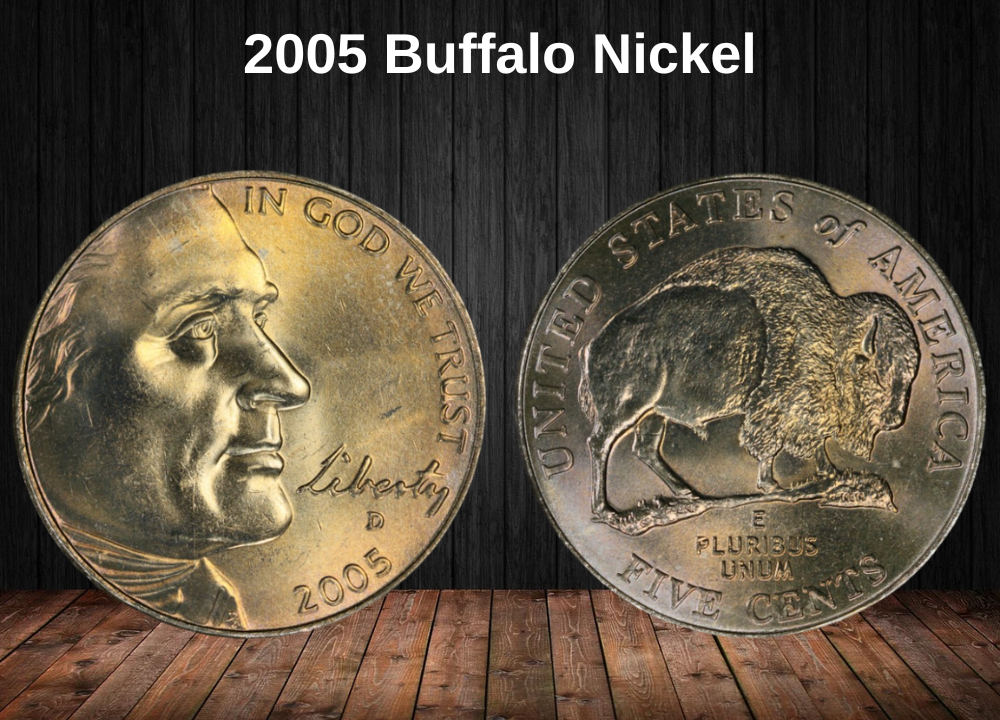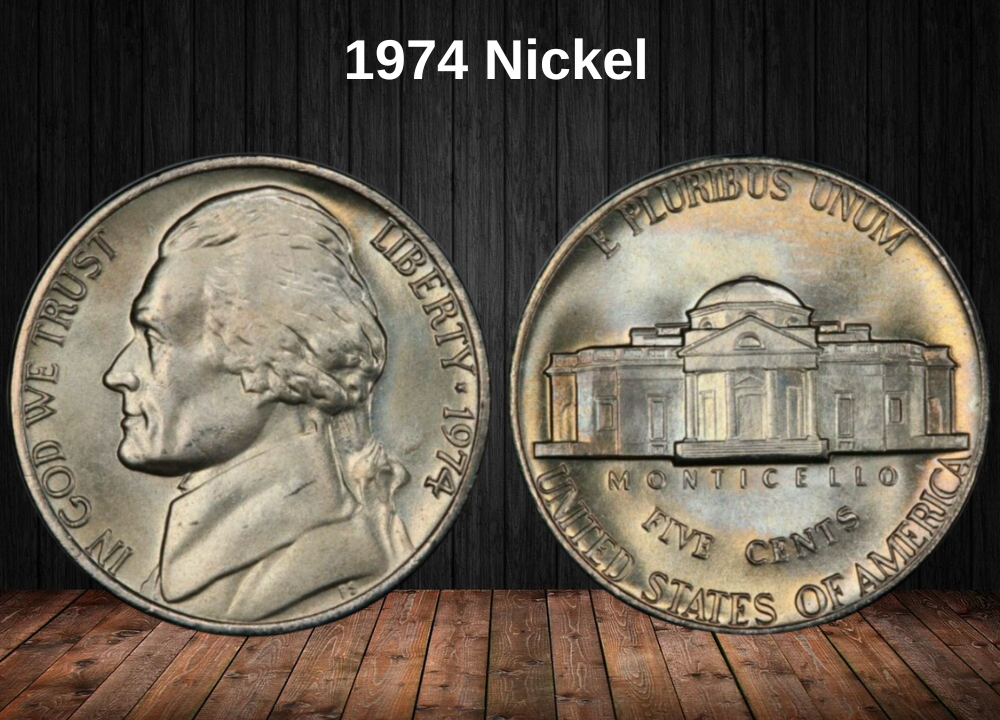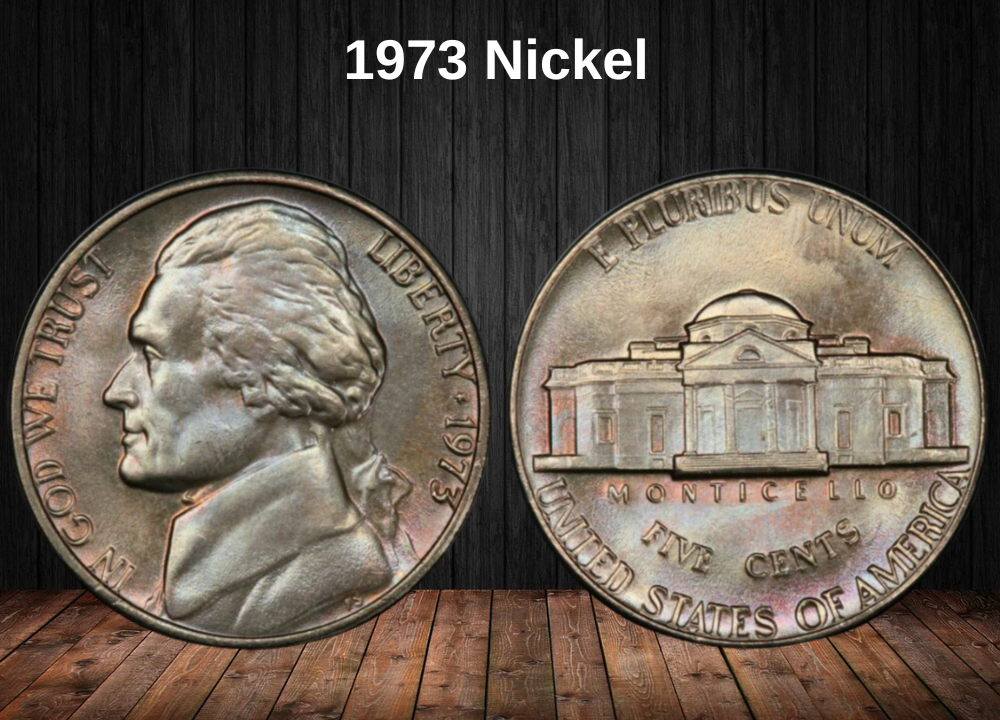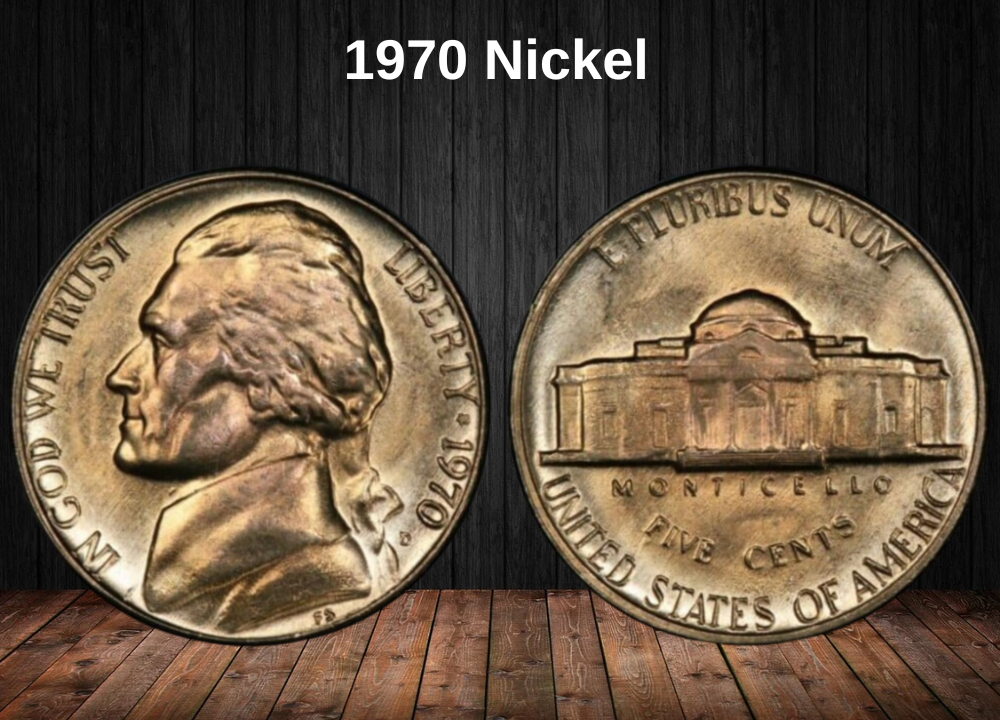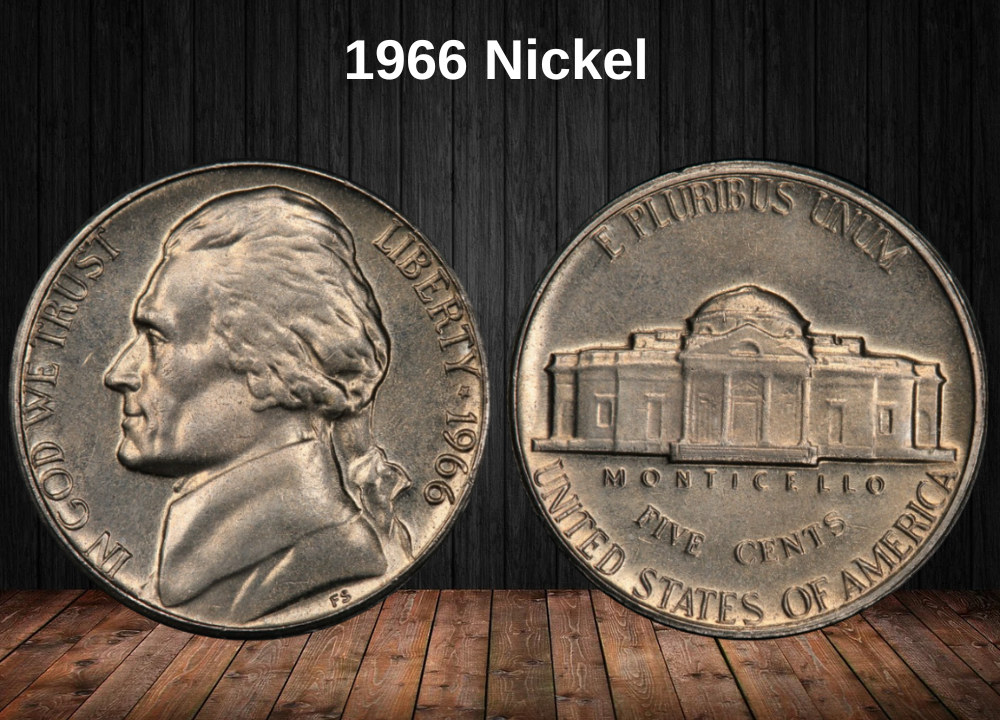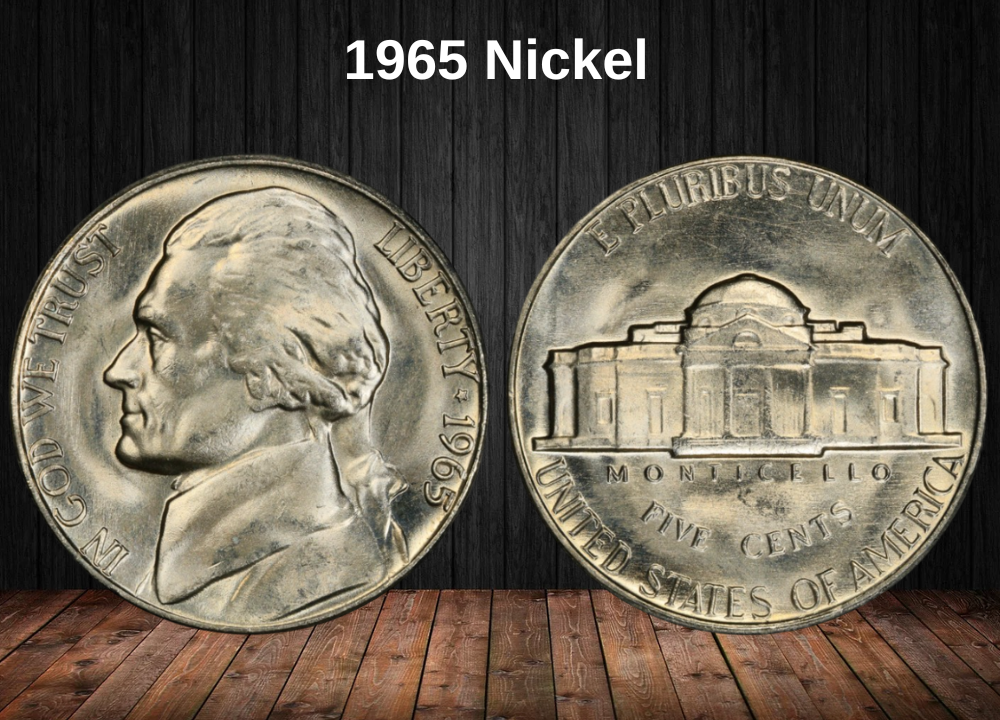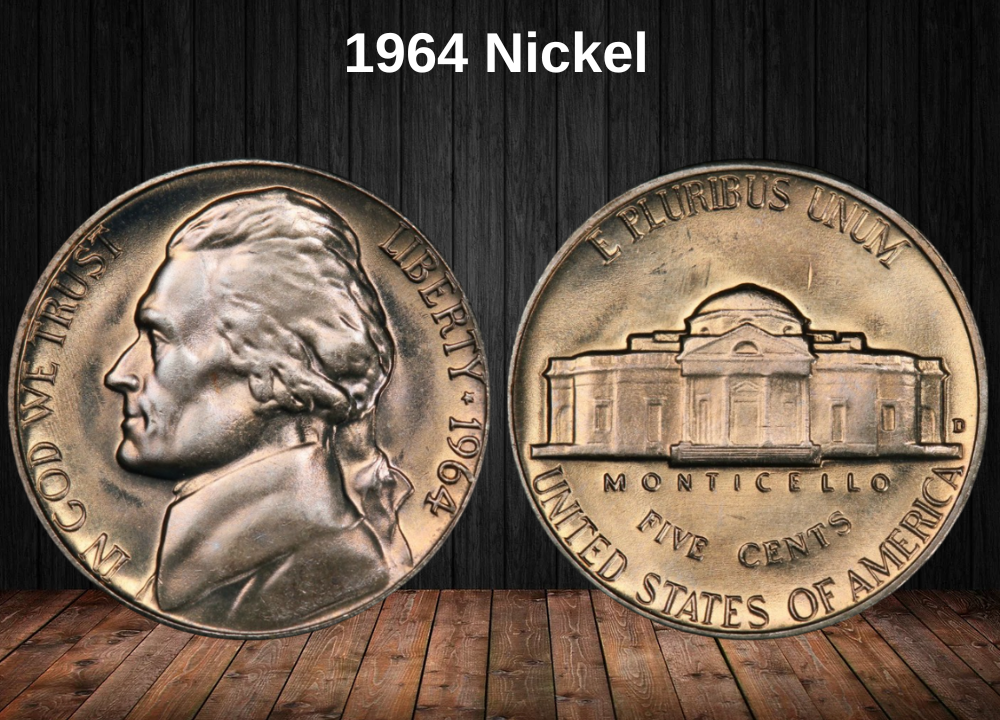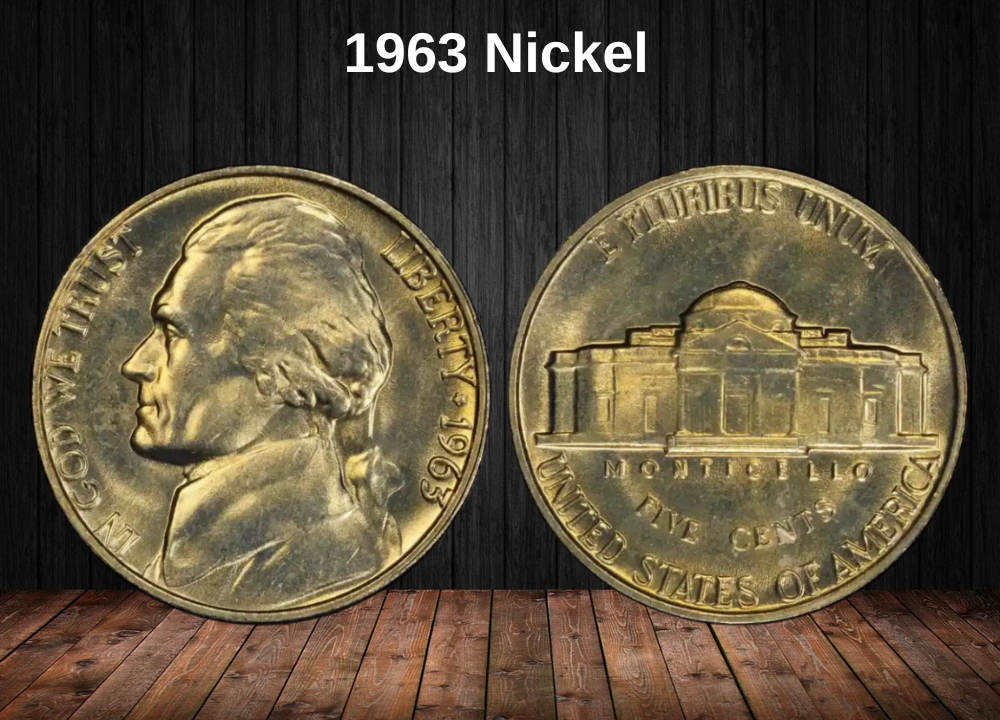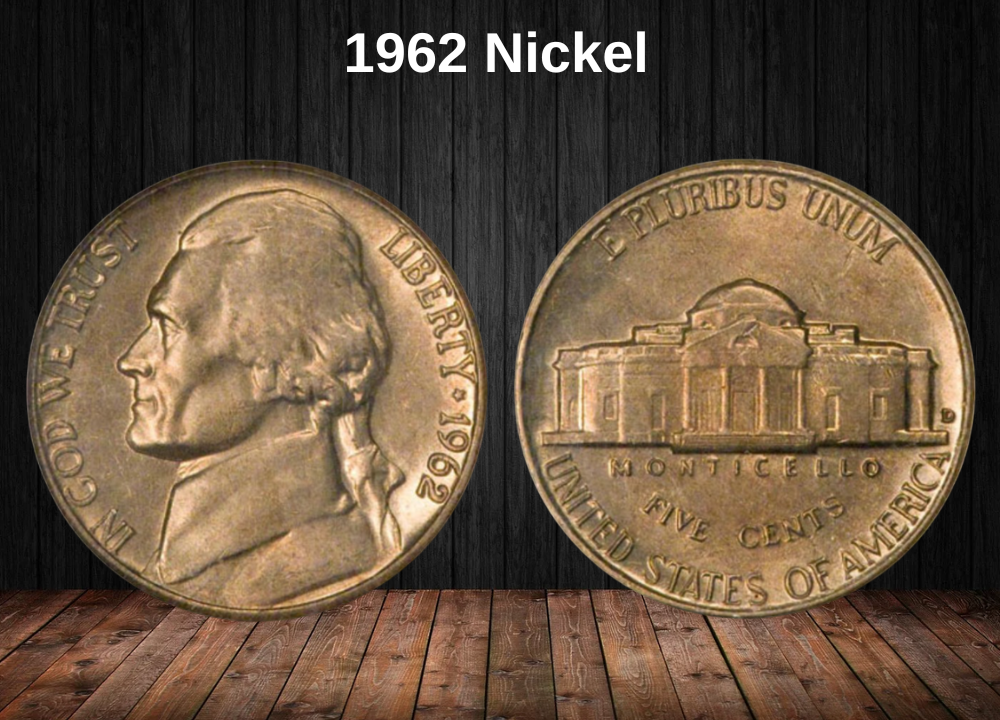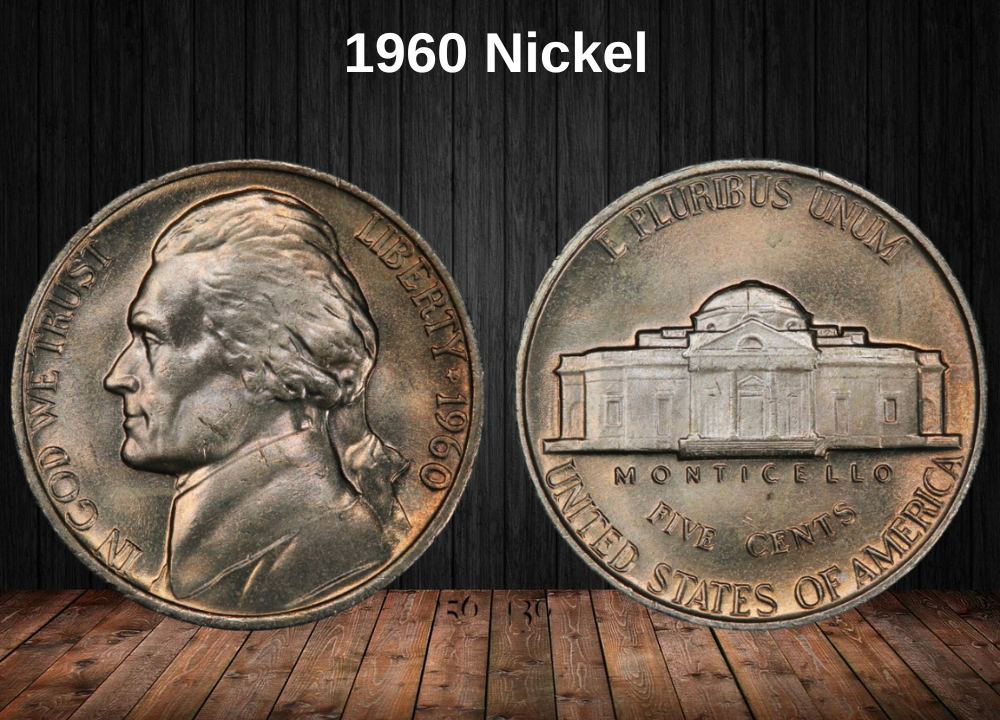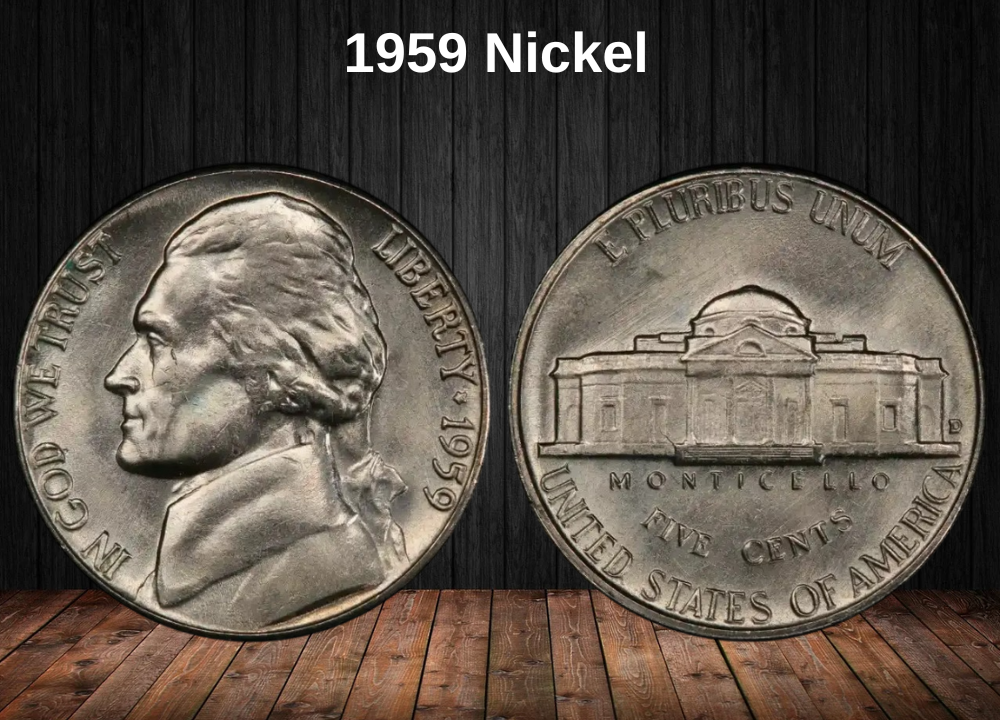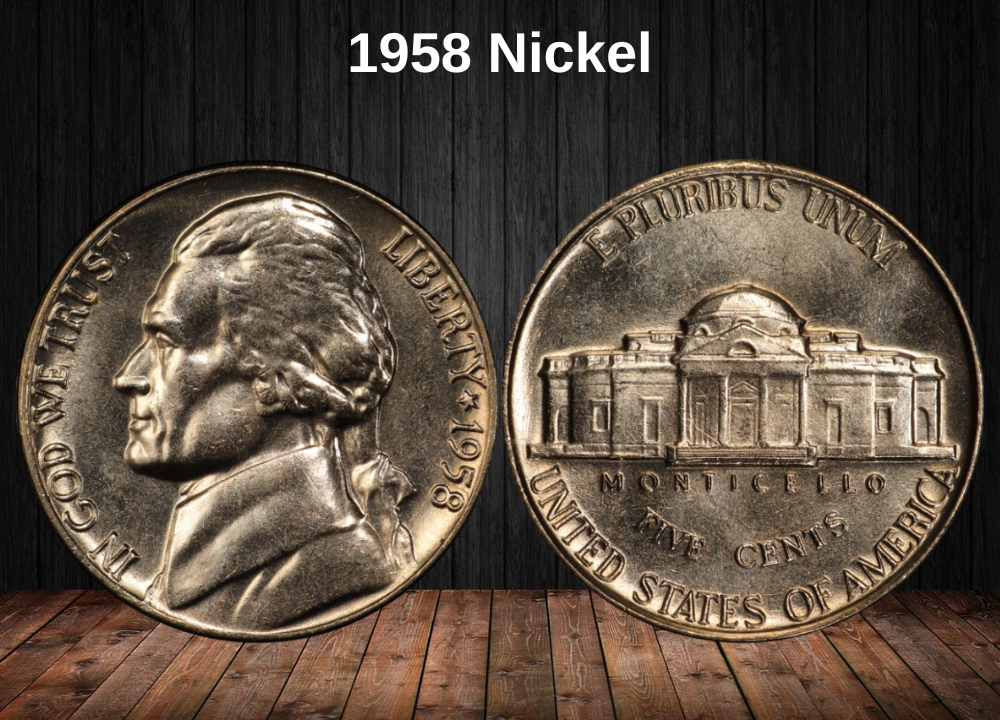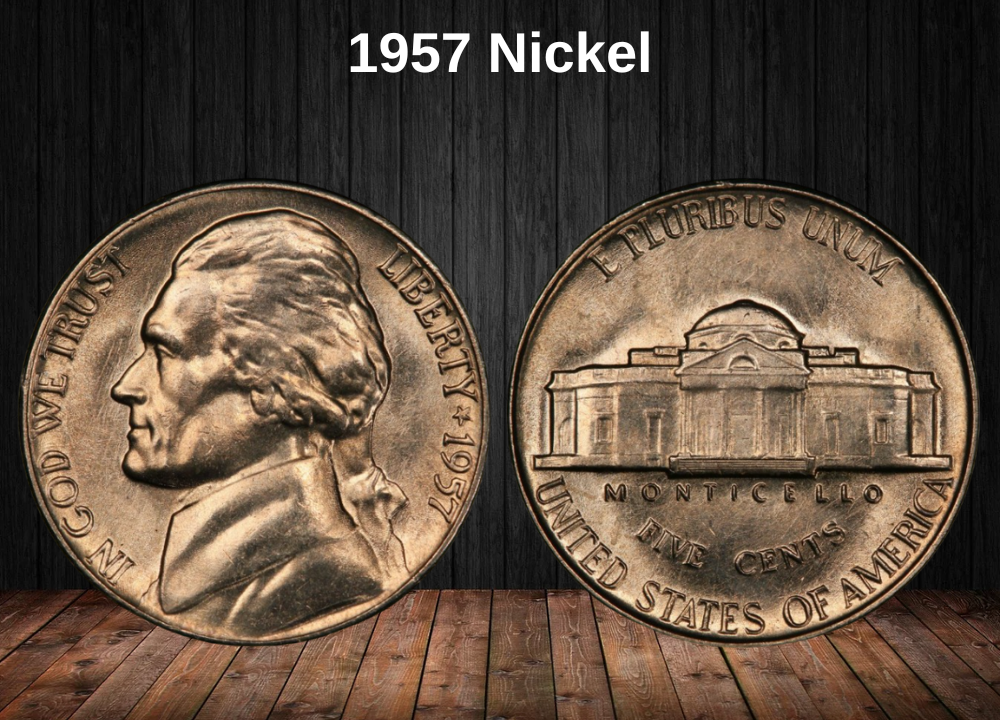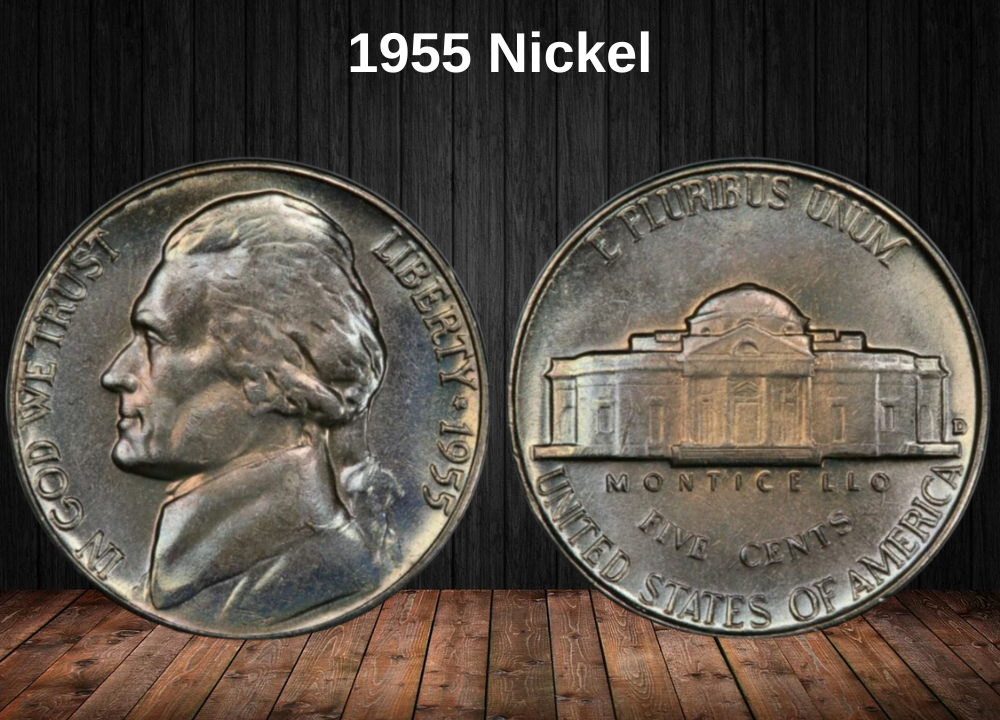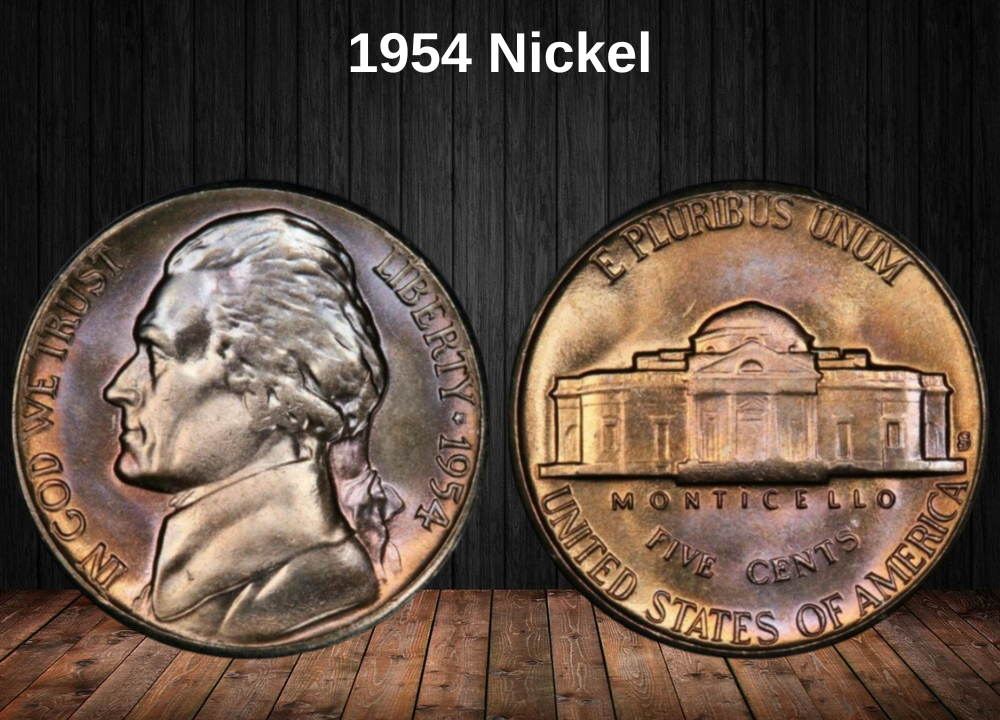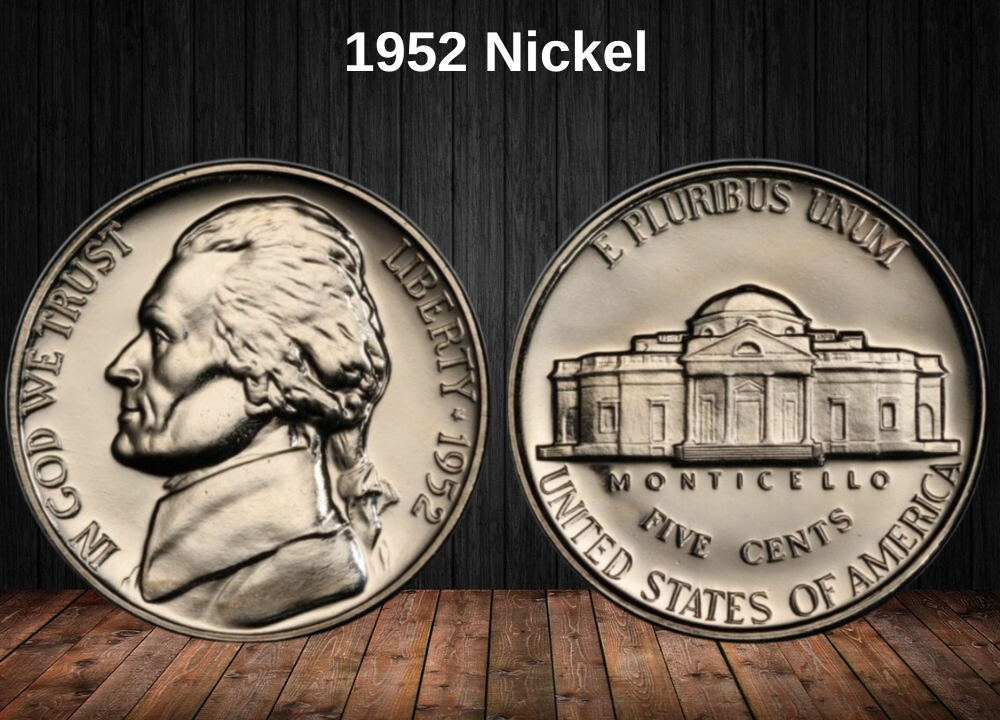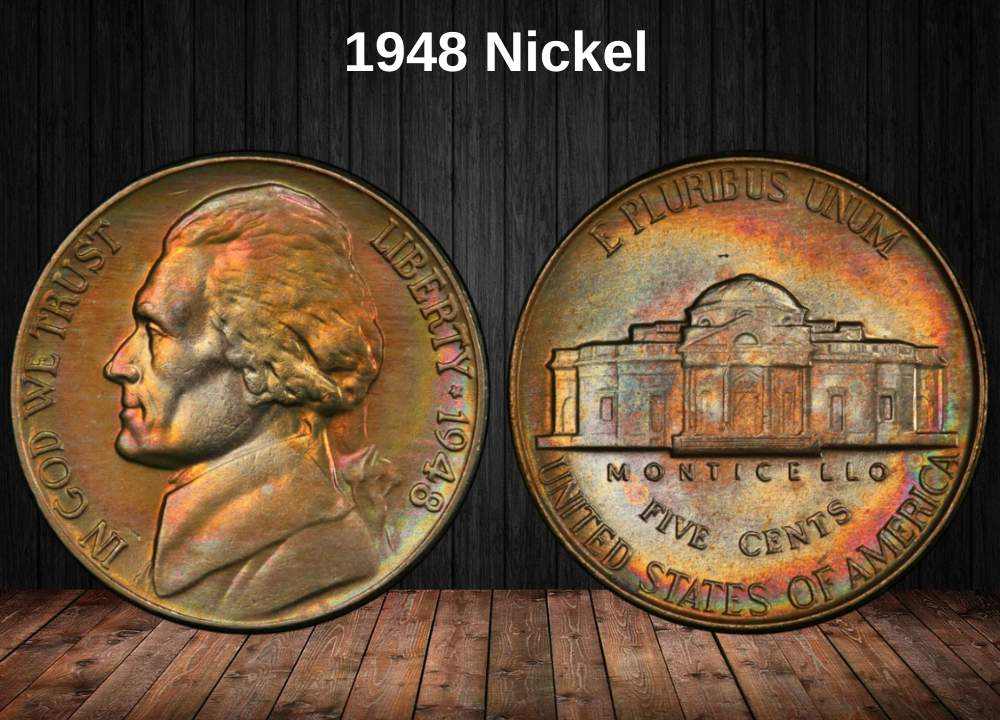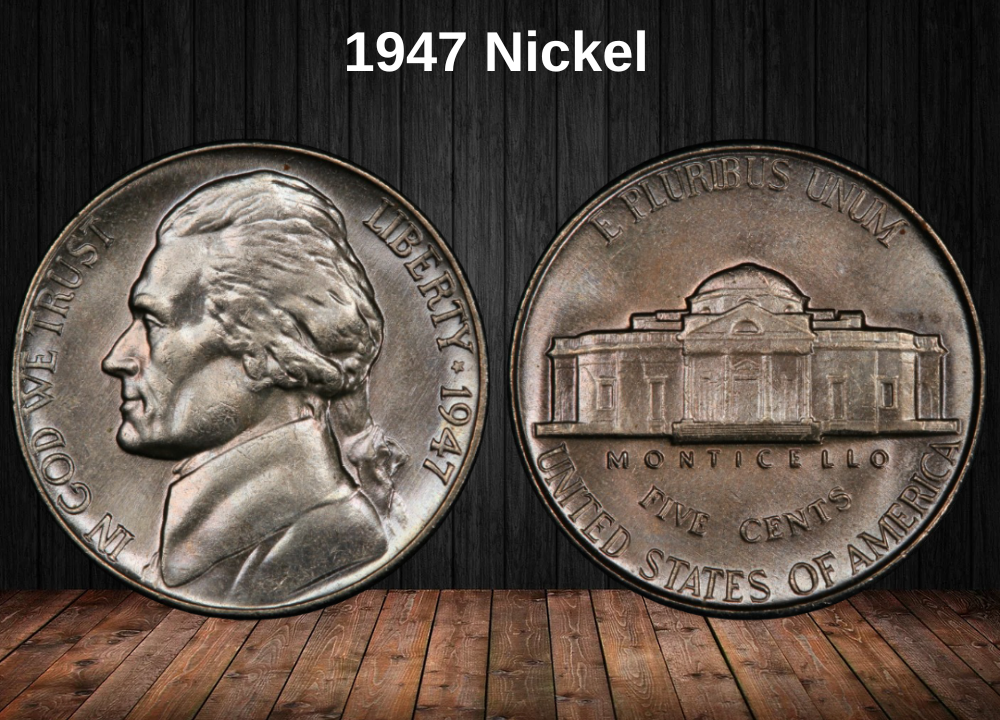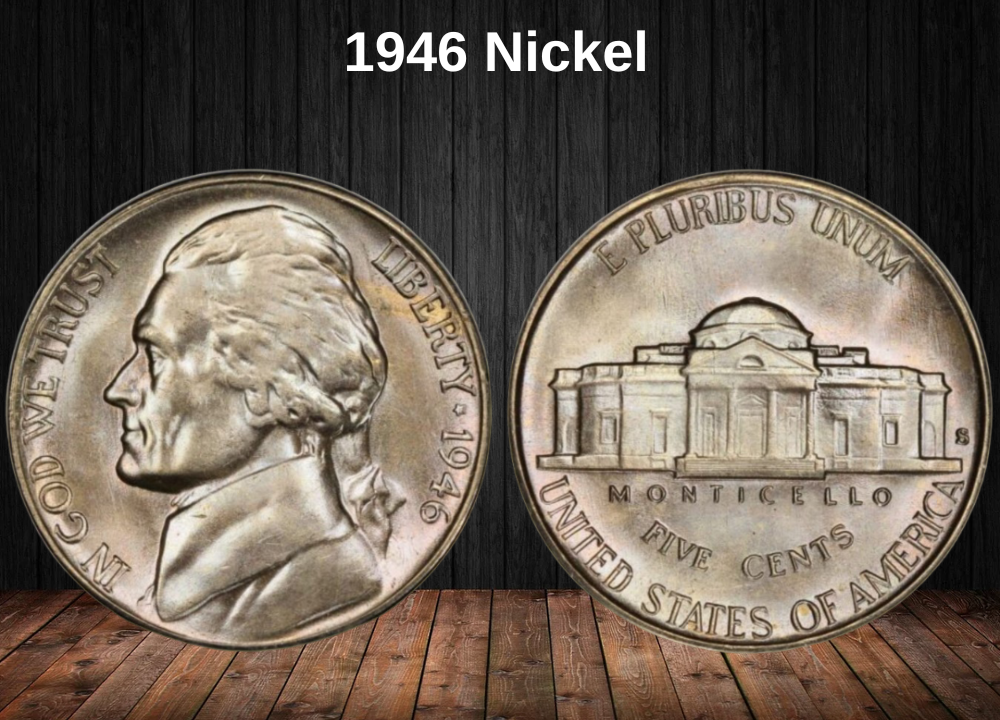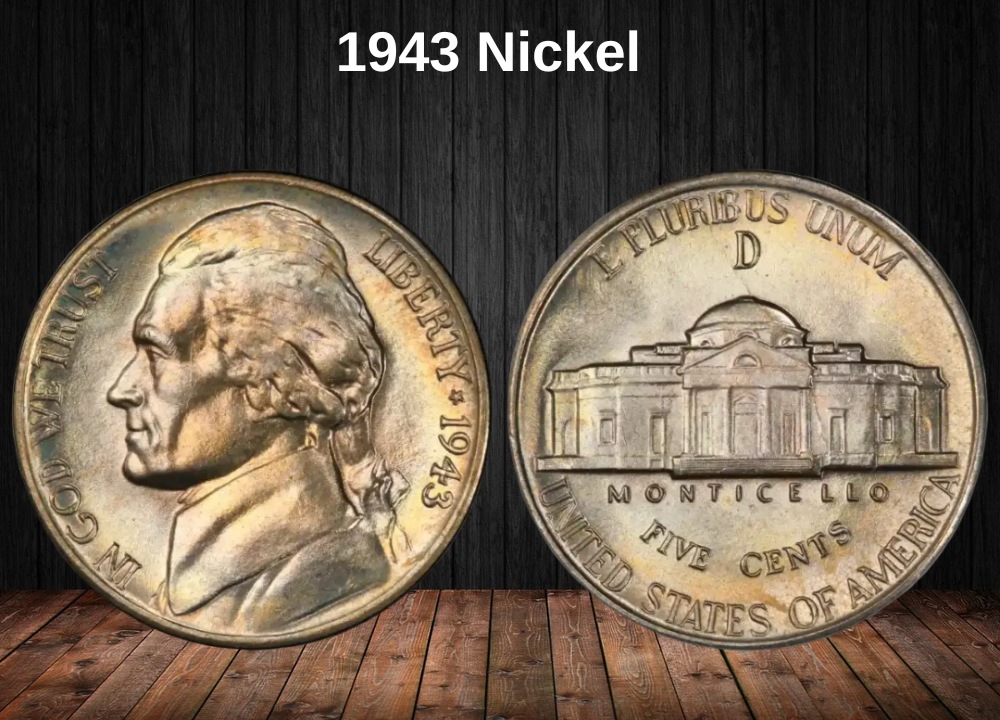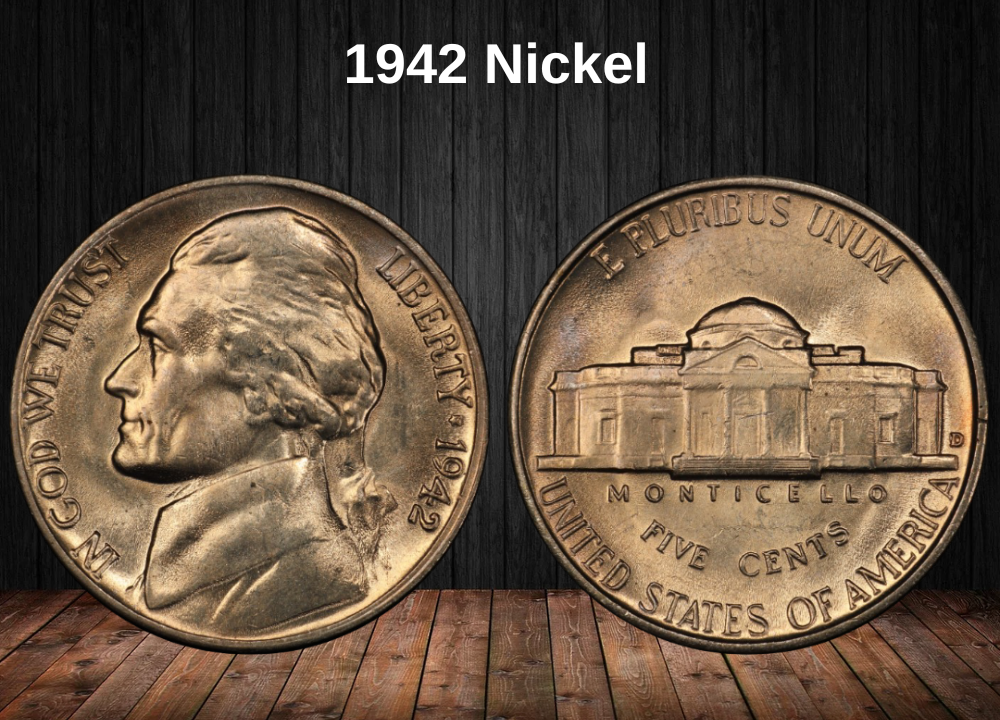The US Mint was eager to retire the Buffalo nickel after 25 years due to persistent production issues. In 1938, the new Jefferson nickel was introduced and remains in circulation to this day.
Although these coins are relatively modern and often affordable, some exceptions stand out. For example, the 1944 nickel value can be quite significant, especially for coins in top grades with exceptional eye appeal. This is particularly true for those featuring Full Steps on the reverse, as only a limited number of these nickels retain the original sharp design.
1944 Nickel Value Chart
| Condition | 1944 P Nickel | 1944 S Nickel | 1944 D Nickel |
|---|---|---|---|
| Good | — | $1 | $1 |
| Very Good | — | $1 | $1 |
| Fine | $3 | $1 | $1 |
| Very Fine | $4 | $2 | $2 |
| Extra Fine | $5 | $2 | $2 |
| AU | $5 | $2 | $2 |
| MS 60 | $7 | $6 | $6 |
| MS 65 | $28 | $18 | $18 |
History of the 1944 Jefferson Nickel
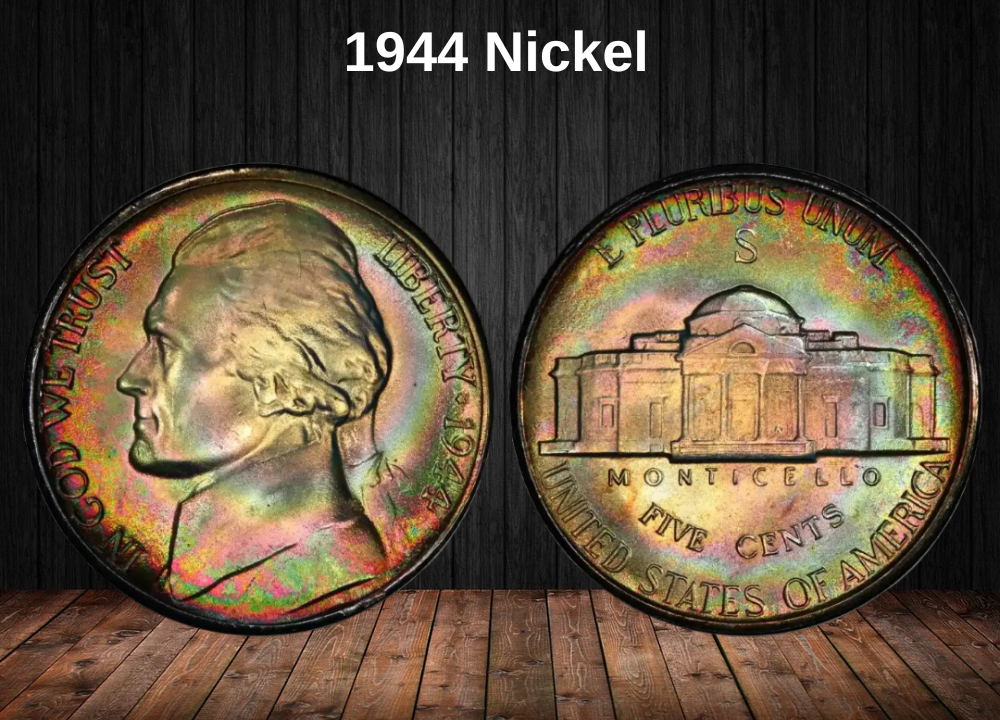
The Jefferson nickel was first introduced in 1938 and has remained the official five-cent coin of the United States ever since. Its creation was largely inspired by President Franklin D. Roosevelt’s admiration for Thomas Jefferson, the third U.S. President and author of the Declaration of Independence.
The coin’s design was selected through a national competition, which Felix Schlag won, beating out 390 other artists. After a few adjustments to his depiction of Monticello (Jefferson’s home), Schlag’s design became the standard for decades, remaining virtually unchanged for over 60 years.
1944 Jefferson Nickel Types and Mintage
| Mint Location | Type | Mintage |
|---|---|---|
| Philadelphia | 1944 P Nickel | 119,150,000 |
| San Francisco | 1944 S Nickel | 21,640,000 |
| Denver | 1944 D Nickel | 32,309,000 |
| — | Total | 173,099,000 |
Wartime Composition Changes
Although they’re called “nickels,” the 1944 Jefferson nickels contain no actual nickel. During World War II, the U.S. government needed the metal for military use. As a result, nickels minted from mid-1942 to 1945 were made of a wartime alloy composed of 35% silver, 56% copper, and 9% manganese.
One of the most interesting features of the 1944 nickels is that Philadelphia coins carried the “P” mint mark—a first in U.S. coinage history, as Philadelphia coins typically had no mint mark at all before this period.
Features of the 1944 Jefferson Nickel
The Jefferson nickel series began in 1938, introduced as a replacement for the Buffalo nickel, which had posed numerous challenges during production. The winning design by Felix Schlag remained in use for decades, only seeing significant changes in the 21st century when the U.S. Mint refreshed the coin’s look.
The 1944 Jefferson nickel is part of a unique subset known as the “Wartime Nickels,” produced from mid-1942 through 1945. These coins stand out because of their distinctive metal composition—a response to World War II’s demand for nickel, a crucial material for military equipment.
Instead of the usual copper-nickel alloy, Wartime nickels were made of 35% silver, 56% copper, and 9% manganese. This not only gave the coins a lighter color and different feel, but also added intrinsic value due to the silver content.
The obverse of the 1944 Jefferson nickel
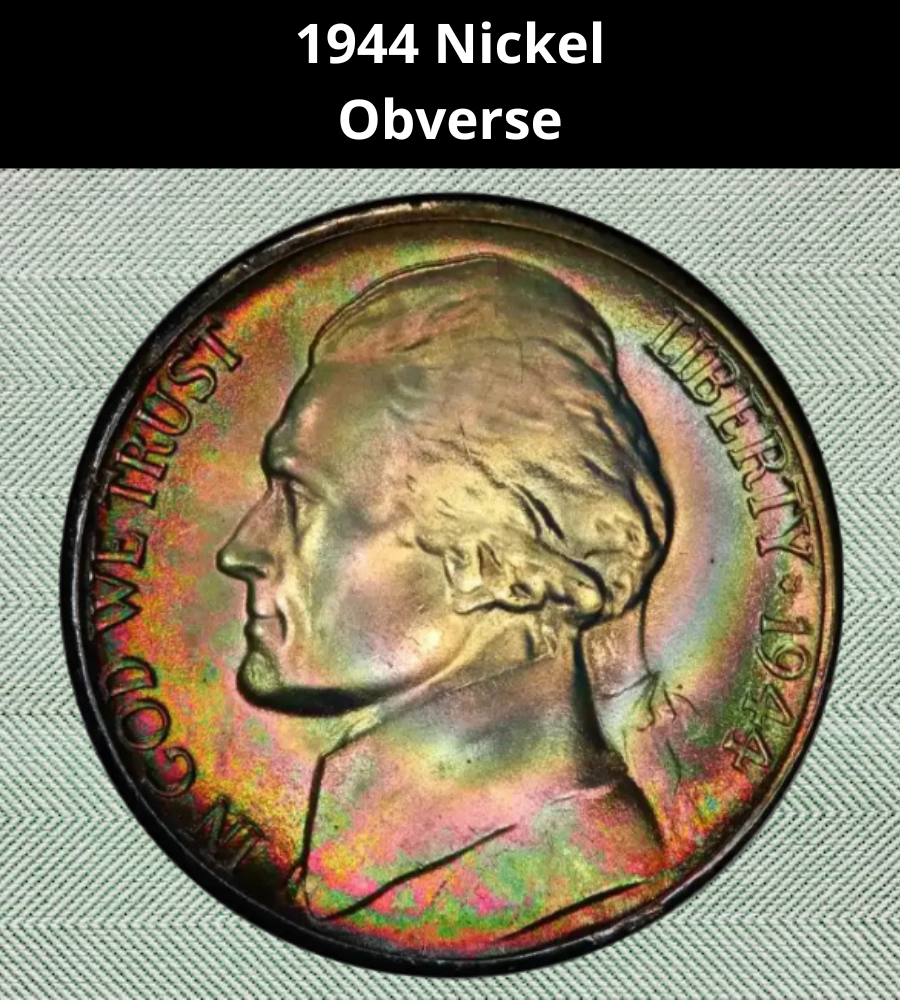
The obverse design of the 1944 Jefferson nickel proudly honors Thomas Jefferson, the third President of the United States. His left-facing portrait dominates the center of the coin, showcasing a dignified pose and a broad-collared coat—a style considered fashionable in his era.
To the right of Jefferson’s profile, you’ll find the word “LIBERTY” followed by the year “1944”, both separated by a centered five-pointed star. On the left edge, the national motto “IN GOD WE TRUST” is inscribed, representing the foundational unity of the original 13 colonies that formed the United States.
The overall design reflects a sense of simplicity, strength, and patriotism, perfectly fitting for a coin struck during wartime.
The reverse of the 1944 Jefferson nickel
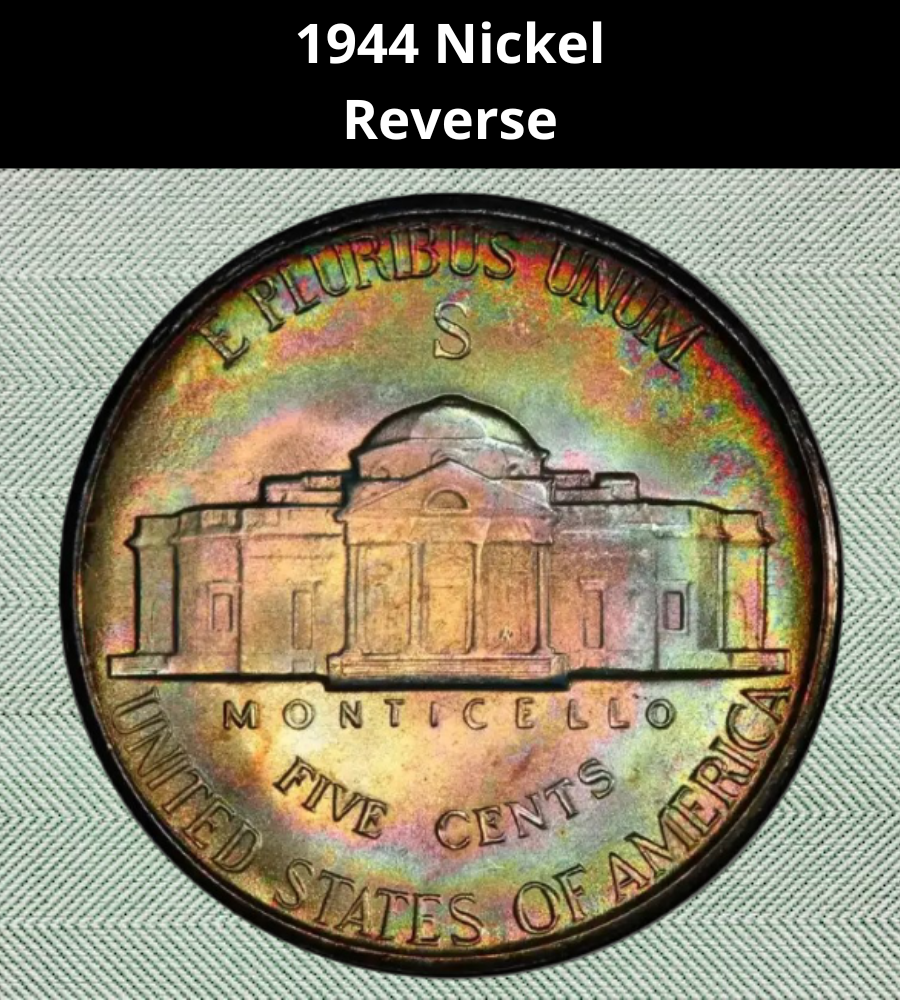
The reverse of the 1944 Jefferson nickel features a detailed image of Monticello, the historic Virginia estate designed and built by Thomas Jefferson himself. Set against a flat background, the classical structure symbolizes the legacy and intellect of one of America’s Founding Fathers.
Above the domed roof appears the Latin motto “E PLURIBUS UNUM,” meaning “Out of many, one.” Just below this inscription, you’ll notice a large mint mark (P, D, or S)—a defining trait of wartime nickels. This placement, directly above Monticello, was introduced during World War II to signal the coin’s special silver-based alloy.
Beneath the mansion, three key inscriptions appear, stacked in a formal layout:
- “MONTICELLO” (the name of the building),
- “FIVE CENTS” (the coin’s denomination),
- “UNITED STATES OF AMERICA.”
A special detail to note is the staircase on the front of Monticello. The number of visible steps plays a major role in determining the coin’s value—coins with Full Steps (FS) are far more desirable to collectors.
Specifications of the 1944 Jefferson Nickel
- Face Value: Five cents ($0.05)
- Shape: Round
- Composition: 56% copper, 35% silver, and 9% manganese
- Silver Content: 0.05625 troy ounces (1.75 g)
- Weight: 0.16075 troy ounces (5 g)
- Diameter: 0.83504 inches (21.2 mm)
- Thickness: 0.07677 inches (1.95 mm)
- Edge: Plain
This wartime composition was crucial during World War II, as nickel was needed for military use. Thanks to its silver content and historical context, the 1944 Jefferson nickel remains one of the most collectible coins from the era.
Other Features of the 1944 Jefferson Nickel
The 1944 Jefferson nickel is a wartime five-cent coin with a unique composition designed to conserve nickel for military use. It has a face value of $0.05 and features a plain edge, just like other coins in the series.
What sets this coin apart is its metal content. Each piece contains 35% silver, amounting to approximately 0.05625 troy ounces (1.75 grams) of the precious metal. The full composition consists of 56% copper, 35% silver, and 9% manganese.
In terms of physical specifications, the coin weighs 5 grams (0.16075 troy ounces), has a diameter of 0.83504 inches (21.2 mm), and a thickness of 0.07677 inches (1.95 mm). Despite the change in alloy, these dimensions match those of regular Jefferson nickels, maintaining compatibility with vending machines and coin-counting equipment of the time.
Grading the 1944 Jefferson Nickel
Before selling your 1944 Jefferson nickel, it’s highly recommended to have it professionally graded. While lower-grade coins—especially those below Good (G-4)—are usually worth no more than face value, even modest improvements in condition can significantly raise the price.
The most valuable examples are those in Mint State (MS) condition, typically ranging from MS 60 to MS 70. Small differences in luster, strike, and surface preservation can cause dramatic changes in value, which is why expert grading is essential if you suspect your coin might be in exceptional condition.
Here’s a breakdown of the standard grading scale:
| # | Grade |
|---|---|
| 1 | Basal State-1 |
| 2 | Fair (FR) |
| 3 | Very Fair (AF) |
| 4–6 | Good (G) |
| 7–10 | Very Good (VG) |
| 12–15 | Fine (F) |
| 20–30 | Very Fine (VF) |
| 40 | Extremely Fine (EF/XF) |
| 50 | About Uncirculated (AU) |
| 60 | Mint State – MS 60 |
| 65 | Mint State – MS 65 |
| 70 | Mint State – MS 70 (perfect) |
Tip: If you’re unsure of your coin’s grade, consider consulting a professional coin grading service like PCGS or NGC. This can help unlock its true market value.
1944 Jefferson Nickel Value Guides
1944 P Jefferson Nickel Value

The Philadelphia Mint struck an impressive 119,150,000 Jefferson nickels in 1944—by far the highest output of the year. While most of these coins entered circulation, only a small percentage remain in high grades today.
Circulated examples are modestly valued, typically selling for $1 to $3 depending on wear. In contrast, uncirculated coins (those that were never used in commerce) generally command between $7 and $110, depending on their preservation.
Coins in superb condition, particularly those graded MS 67+, are rare and can reach up to $340 in value.
Collectors especially prize Full Steps (FS) varieties, which feature sharp, well-defined steps on Monticello’s front. Their current market values are:
- MS 64 FS – $26
- MS 65 FS – $62
- MS 66 FS – $120
- MS 67 FS – $700
Auction Highlights
- The highest price paid for a 1944 (P) Jefferson nickel without Full Steps was a MS 60 coin, which sold for $7,475 in 2011.
- The record-holder among FS coins is a MS 67+ Full Steps example, which fetched a remarkable $9,400 in 2014.
1944 D Jefferson nickel value
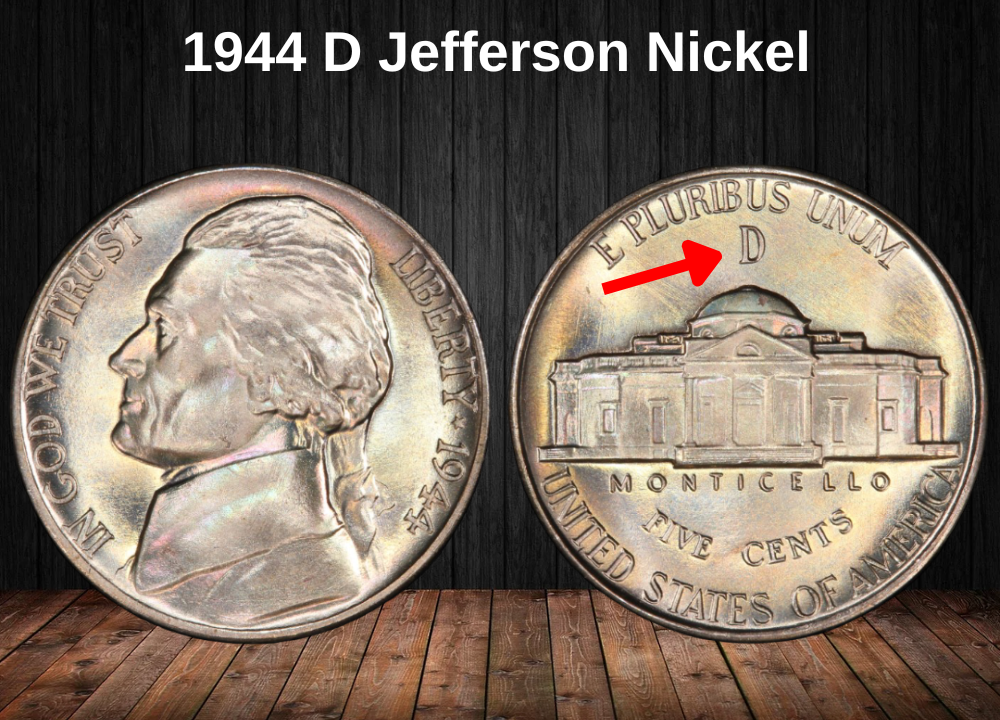
In 1944, the Denver Mint produced 32,309,000 Jefferson nickels, each marked by a large “D” mint mark on the reverse. These coins, struck using a wartime alloy of copper, silver, and manganese, were part of the U.S. effort to conserve nickel during World War II.
Today, these nickels remain affordable, with most circulated examples valued between $1 and $4. If you’re looking for a coin in uncirculated condition, expect to pay anywhere from $6 to $215, depending on its grade and eye appeal.
Coins with the Full Steps (FS) designation—referring to clearly defined steps on Monticello—are especially desirable. Current market prices for FS examples are approximately:
- MS 64 FS – $30
- MS 65 FS – $38
- MS 66 FS – $50
- MS 67 FS – $200
While most of these coins sell for modest amounts, exceptional examples can command serious premiums. One MS 68 Full Steps specimen is estimated to be worth up to $6,500.
Auction Highlight
The auction record for a 1944-D Jefferson nickel was set in 2012, when a superb MS 68 Full Steps example sold for an astounding $22,325.
1944 S Jefferson Nickel Value

The San Francisco Mint had the lowest mintage in 1944, producing about 21,640,000 nickels. Despite the smaller quantity, circulated coins typically sell for $1 to $4, making them quite accessible.
For collectors seeking uncirculated examples, prices range from $4 up to $125 for well-preserved specimens. However, the highest-grade nickels, especially those rated MS 68, can command values near $1,400.
A particularly rare 1944 S MS 68+ Jefferson nickel went under the hammer in 2021, fetching an unexpected $6,169, highlighting the potential for surprises in the market.
As usual, coins exhibiting Full Steps (FS) on Monticello are more sought after and valued higher than those with fewer than five visible steps. Approximate values for FS coins include:
- MS 64 FS – $85
- MS 65 FS – $185
- MS 66 FS – $450
- MS 67 FS – $750
The rarest Full Steps nickels from the 1944 S mint are superbly preserved, with MS 68 specimens estimated to start at $18,000. Notably, one such coin sold for $14,100 in 2015.
Rare 1944 Jefferson Nickel Errors List
Re-punched Mint Mark
This error occurs when a mint worker strikes the mint mark more than once—usually because the initial impression of the S or D mint mark was poorly positioned.
Since this mistake was fairly common, finding such a coin today is easy, often costing just a few dollars. However, high-quality examples with noticeable re-punching or multiple strikes can be valued between $50 and $300.
Auction results sometimes exceed these estimates. For example, a 1944 Jefferson nickel with a D/D re-punched mint mark graded MS 67 sold on eBay in 2018 for $742. The following year, a similar coin graded MS 66+ with Full Steps fetched $750 from a collector.
Doubled Die
Occasionally, a mint die was mistakenly engraved twice, creating a doubled design on the coins it struck. This error causes nickels to display duplicated images or letters on one or both sides.
Coins showing subtle doubling generally sell for around $25, while those with more pronounced doubling can command prices starting at $100 or more.
Off-center Error
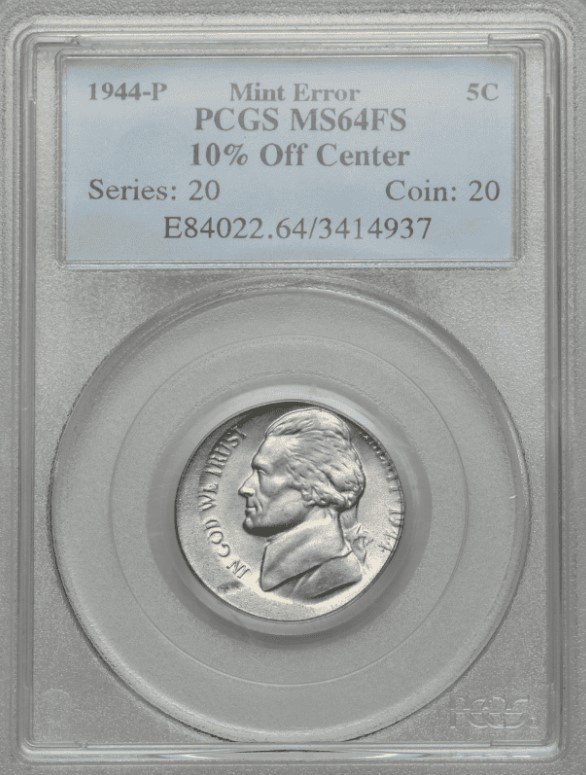
This striking error occurs when the planchet and die are misaligned during striking, resulting in coins with partially missing or shifted designs.
For 1944 nickels, those with approximately 50% of the design missing are the most sought after, valued between $100 and $400, provided the date and mint mark remain clearly visible.
Smaller off-center errors, where only 5% to 15% of the design is missing but the date is intact, typically fetch around $5 to $10.
Henning Nickels
Be sure to look out for the 1944 Henning nickels, which are counterfeit coins produced in Erial, New Jersey by the Erial Mint. Despite their unofficial status, these rare imitations carry collector interest due to their intriguing backstory.
High-grade examples of these Henning nickels can command prices up to $100.
Where to sell your nickel?
Now that you’re aware of your nickel’s value, you may be curious about the best places to sell it. Don’t worry: here’s a rundown of some top online marketplaces where you can conveniently sell your nickels, along with their benefits and drawbacks.
Explore the best platforms for selling nickels online (advantages and disadvantages).
FAQ about the 1944 Jefferson Nickel Value
1. What is the metal composition of the 1944 Jefferson Nickel, and how does it affect its value?
The 1944 Jefferson Nickel returned to the standard composition of 75% copper and 25% nickel after the wartime “silver war nickels” from 1942–1943. This return means 1944 nickels typically have less intrinsic metal value but are still valued by collectors for their historical place in the series.
2. What are the key mint marks for the 1944 Jefferson Nickel, and do they impact value?
The 1944 nickels were minted in Philadelphia (no mint mark), Denver (D), and San Francisco (S). Generally, the San Francisco (S) mint coins are less common and can command higher prices, especially in better conditions.
3. How does the condition or grade influence the value of a 1944 Jefferson Nickel?
Condition plays a significant role. Circulated 1944 nickels are usually common and inexpensive, but uncirculated and proof coins, particularly from Denver and San Francisco mints, can command substantial premiums.
4. Are there any notable varieties or errors to watch for in the 1944 Jefferson Nickel?
While there are no major widely known doubled die varieties, some minor die cracks and mint mark variations exist. These subtle errors can add collectible value if authenticated.
5. What is the approximate market value range for 1944 Jefferson Nickels?
Common circulated coins typically range from $0.10 to $1.50. Uncirculated examples may be valued from $5 to over $50, depending on mint mark and grade. Proof 1944 nickels, especially from San Francisco, often fetch prices upwards of $100.
6. How did post-war minting conditions affect the strike quality of 1944 nickels?
Post-war minting saw improved metal availability, resulting in generally good strike quality. However, some coins from Denver and Philadelphia may show softer strikes or minor die wear, affecting collector interest.
7. What should collectors keep in mind when authenticating a 1944 Jefferson Nickel?
Collectors should examine the mint mark carefully, avoid coins that show signs of cleaning or damage, and consider professional grading for higher-value specimens. Authenticity verification helps maintain the coin’s market value.

